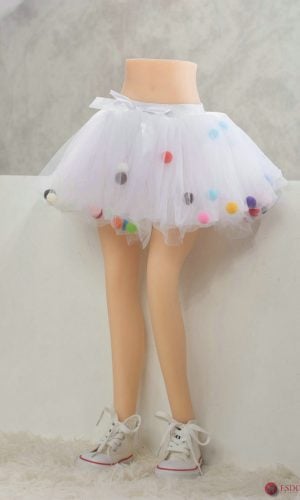There was a program called “Anna Kendrick takes a road trip with a sex doll in the trailer”, which introduced a director named Anna Kendrick. The story is about a protagonist who has a sex doll as a friend. After the therapist tells Anna Kendrick that she needs to hug the sex doll to heal herself, she and her new friend begin a journey full of bonds, dances, rest, and personal breakthroughs. The show said that people are more and more inclined to accompany love dolls made of silicone and TPE materials with authentic images. We call them sex dolls because they are obviously created in accordance with the ideal image.
Now, this is just the latest trend in a series of strange new marriages that many people have become. For example, the editor once introduced a Japanese young man who married the sex robot idol “Hatsune Miku”; and Spanish artificial intelligence expert Sergi Santos, who married a robot he designed; and a Korean young man who married A pillow with anime characters printed on it.
A sentient feminist sex doll seems to be a growing trend. In recent years, we have a company specializing in the production of this sentient feminist sex doll, which has begun to enter domestic and international perspectives, such as ESDOLL, WMDOLL, DSDOLL, etc.; there are also foreign brands famous for the BBC documentary “Man and Doll”, REALDOLS, SINTHETICS, etc.
These trends are called “humanoid fetishes” or “technical desires” by some people. According to Encyclopedia, this kind of obsession is based on the attraction of humanoid dolls or dolls dressed up as adults. We can advertise on the Internet, some popular This anthropomorphic image is seen in the anime series and music videos.
But what does it mean when most people describe this fetish from a male perspective? Why are women often portrayed as robots? What does this tell us about our culture, gender, and orientation? Finally, how does human behavior change due to these technological advances?
Although some people claim that humans respond to sex dolls as an instinctive response to abnormal, idealized, and weird objects, just like the response of insects to various heat and light sources. The editor believes that fetishism may stem from a person’s desire for control and passivity towards a partner, although this is not the case for everyone, because many people are lonely or tired of finding a partner.
But it seems that men are the main consumer group for a sentient feminist sex doll. What does this tell us about gender, power, and culture? It can be considered that this overwhelming prejudice stems from male power, or that men are tired of female rejection and turn to sex dolls. Some conclusions can be drawn by watching some interviews with the owners of sex dolls in the BBC documentary.
The men in the film, from the unsocial lonely to the abandoned lover, seem to have psychological problems due to alienation and the inability to realize the expectations of the other half of the society. Several of them had partners when they were young, but they broke up later and began to close themselves, unable to talk to the opposite sex. Others have a strong desire for control, and they choose a sentient feminist sex doll because they will not defy themselves.
Finally, I have to regret the possibility of liberation in the “Cyborg Declaration”. We do not regard the combination of man and machine as something that frees us from various forms of oppression (gender, race, age, etc.), but regard sexcentrism in artificial fetishes as short-term and exploitative Sexual, and it reinforces the existing gender oppression, that is, these trends strengthen the objectification of women, patriarchy, and male control behavior.
















